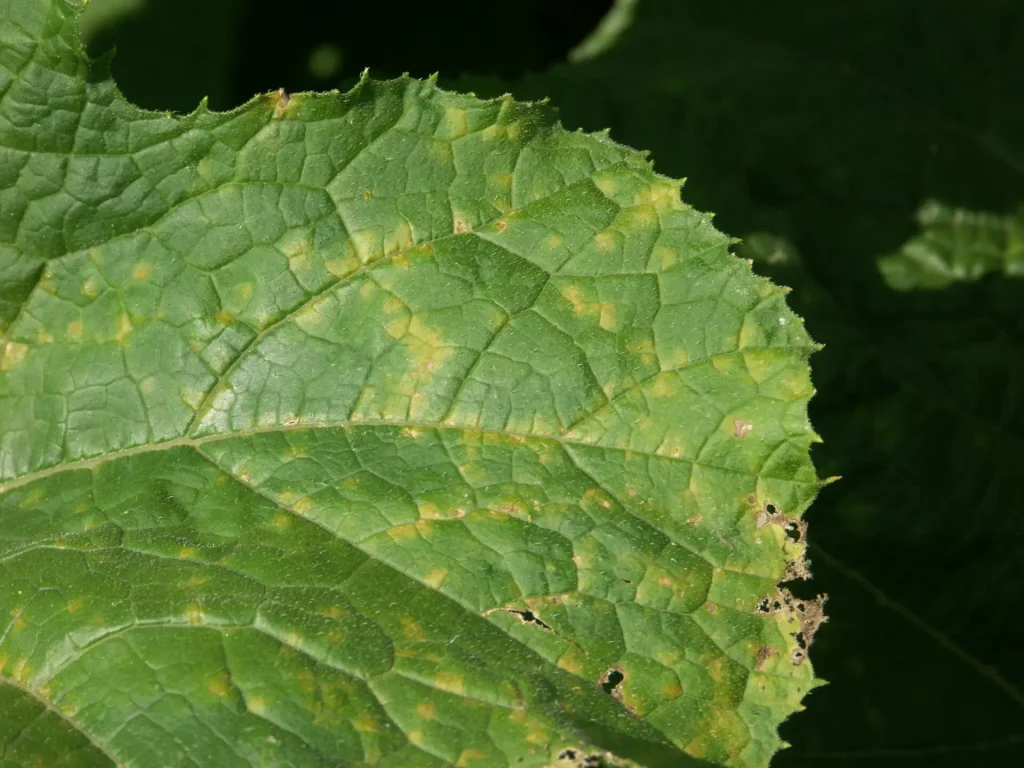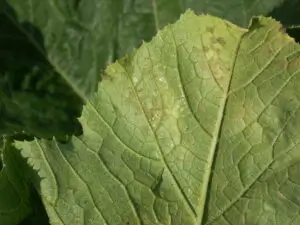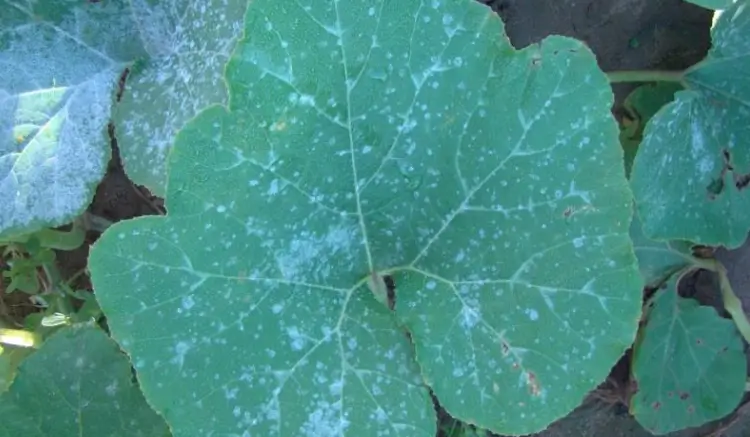Pumpkins are one of the widely known crops because of their nutrient content, and when it comes to production, India is the second largest producer. Together, India and China grow more than 60% of the world’s pumpkins. This doesn’t mean that Pumpkin farming is an easy win, Pumpkin farmers face many challenges in their farming cycle. Here we are discussing 2 major fungal diseases and their management that Pumpkin farmers must be aware of.
2 Major Fungal Diseases of Pumpkin
- Downy Mildew in Pumpkins
- Powdery Mildew in Pumpkins
Downy Mildew in Pumpkins
Downy mildew in pumpkins is caused by the fungus Pseudoperonospora cubensis. It not only affects pumpkins but also all members of the cucurbit family, such as cucumbers, gourds, muskmelons, squash, watermelons, and zucchini.
It is very important to keep this disease in check, as downy mildew can severely affect the yield of pumpkins.
Symptoms of Downy Mildew in Pumpkins
Initially, yellow angular lesions appear on the pumpkin leaves. As the disease progresses, these lesions may coalesce and turn brown. In moist or rainy weather, dark spores can be observed on the underside of the leaves.


Plants infected by downy mildew disease may produce fewer fruits, and those produced might be smaller or less flavourful.
These spores can spread to other leaves, plants and also fields due to wind.
Early Detection is Important
Downy mildew can turn the leaves brown which reduces the leaf surface. And this loss in surface can affect the yield, size and quality of the fruit. Therefore it is important to detect the early symptoms and adopt management practices accordingly.
Favourable Conditions for the Spread of Downy Mildew Disease
Downy mildew can survive under cold conditions, with temperatures varying from 15-20°C. The disease can easily spread during rainy weather. Moisture on the leaves acts as a catalyst for infection and development.
Downy mildew spores primarily spread through the air, but they can also survive in plant debris, seeds, and soil. These spores can infect disease-free fields through infected seedlings or transplants.
The symptoms usually appear 3-12 days after infection. High temperatures, which are above 35°C, are not favorable for disease development. However, if the night temperature is cooler, disease development may still occur.
Management of Downy Mildew in Pumpkins
1️⃣ Wider spacing is important to encourage proper airflow and reduce leaf wetness.
2️⃣ Crop rotation helps disrupt the disease cycle. Rotating crops such as legumes, tomatoes, brinjals, and root crops can reduce the pathogen population.
3️⃣ Growing pumpkins in controlled environments can also be beneficial. Techniques like trellising, increasing row or plant spacing, or using greenhouses can help reduce relative humidity and leaf wetness.
4️⃣ Make sure to use clean tools and equipment in the field to prevent the spread of pathogens.
5️⃣ Give copper oxychloride or mancozeb at a 5-7 days interval as a prophylactic measure to prevent the disease incidence.
6️⃣ Apply Neem Oil and Pseudomonas flourescens to control the disease.

7️⃣ Downy mildew in pumpkins can be chemically controlled by applying fungicides such as copper oxychloride @ 2 gm/lit of water, hexaconazole + captan @ 2 gm/lit of water, mancozeb + metalaxyl @ 2 gm/lit of water and propineb @ 3 gm/lit of water. However, consult experts before applying.
Learn more about how to manage different fungal diseases in bitter gourds here
Powdery Mildew: One of the Major Fungal Diseases of Pumpkin
Powdery mildew in pumpkins is mainly caused by two common fungal pathogens, Podosphaera xanthii and Erysiphe cichoracearum.
It directly affects photosynthesis and growth, and also leads to premature senescence, which in turn results in yield loss.
Symptoms of Powdery Mildew in Pumpkins
The disease usually starts on older leaves and affects the field only after fruit initiation.
Initially you can observe small, circular, white, powdery colonies on the leaf surface. Sometimes these can be observed on the lower surface of the leaves as well. As the disease progresses, the fungal colonies merge to cover most of the surface.

The affected leaves in the later stages, turn yellow, wither and die.
The fruits are not directly affected by the pathogens but may be malformed or sunburned due to loss of foliage.
Severity may also lead to both reduction and size of the fruit.
Favourable Conditions for the Spread of Powdery Mildew Disease
- The spores spread from one leaf to another or plant to plant due to wind.
- The disease develops quickly under dense plant growth, low light intensity, warm temperatures, and high relative humidity.
- Unlike downy mildew disease, leaf wetness does not promote disease spread, and disease development can occur even in the absence of dew.
Management of Powdery Mildew in Pumpkins
1️⃣ Ensure good air movement around plants by spacing them properly, staking them as needed, and controlling weeds.
2️⃣ Remove debris, weeds, and any volunteer plants that may harbour pathogens.
3️⃣ Apply carbendazim or dinocap every 2 weeks starting at flowering to effectively control powdery mildew disease in pumpkins.
4️⃣ You can also use fungicides containing Chlorothalonil @ 2 gm/lit of water, Azoxystrobin @ 2-3 ml/lit of water, Difenoconazole @ 1 ml/lit of water, or Myclobutanil 1-2 gm/lit of water to keep pumpkins free from powdery mildew.
5️⃣ Disease incidence is common during the growth cycle of plants, but adopting appropriate management strategies plays a crucial role in keeping pumpkin plants disease-free without compromising yield and quality.
Want to order these fungicides for your field? Looking for free crop advisory services? Download AgriApp today and improve your yield with better advice and products.